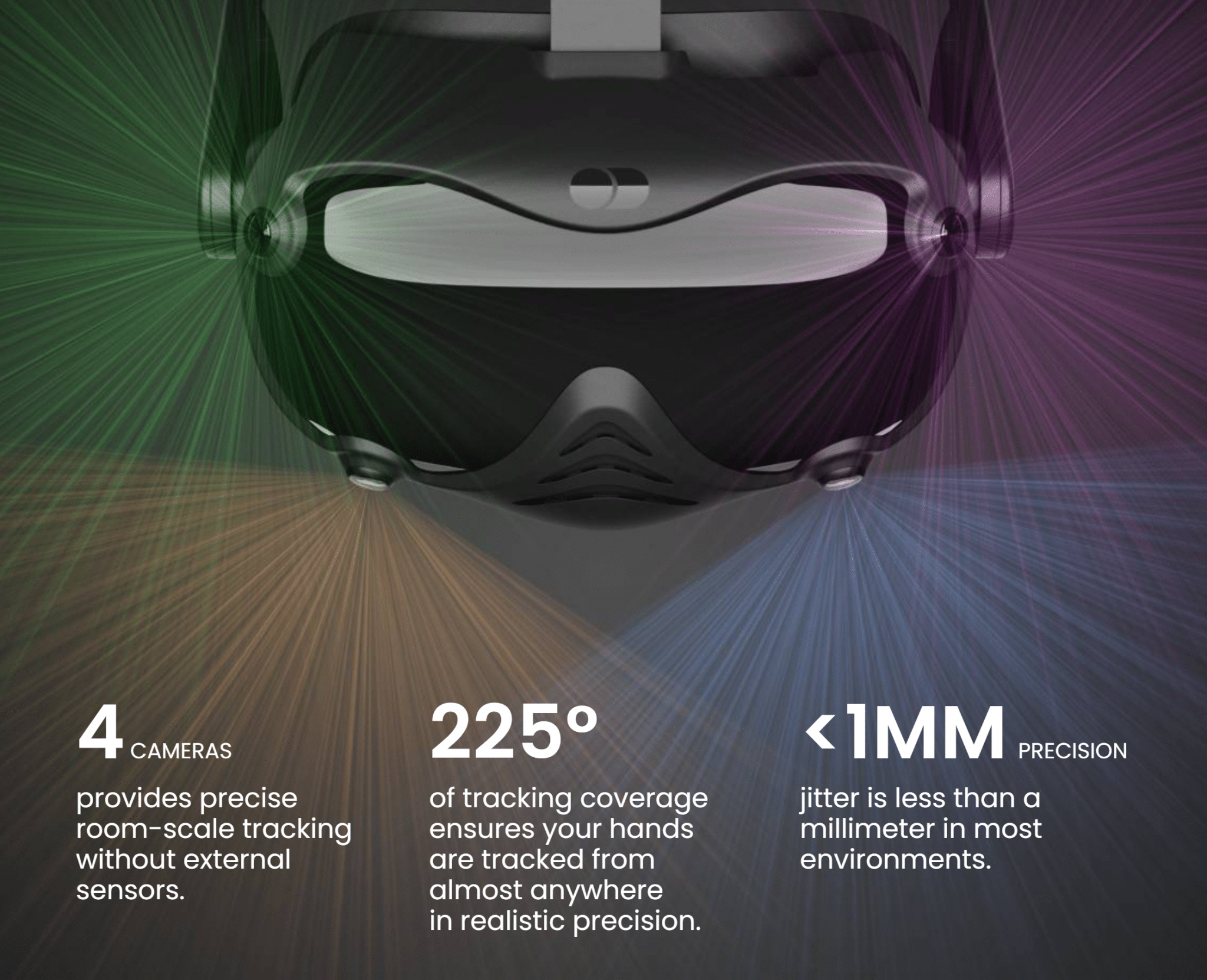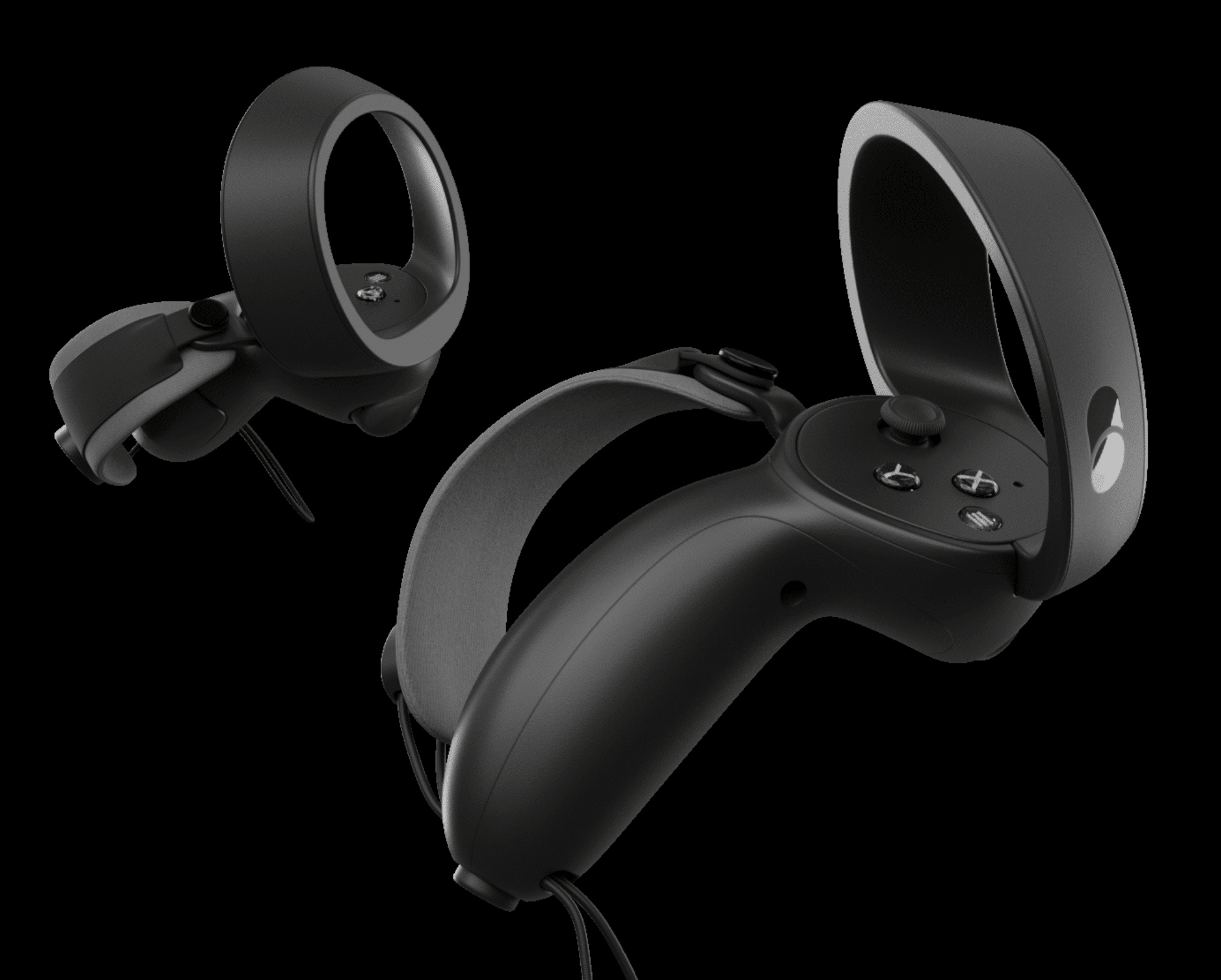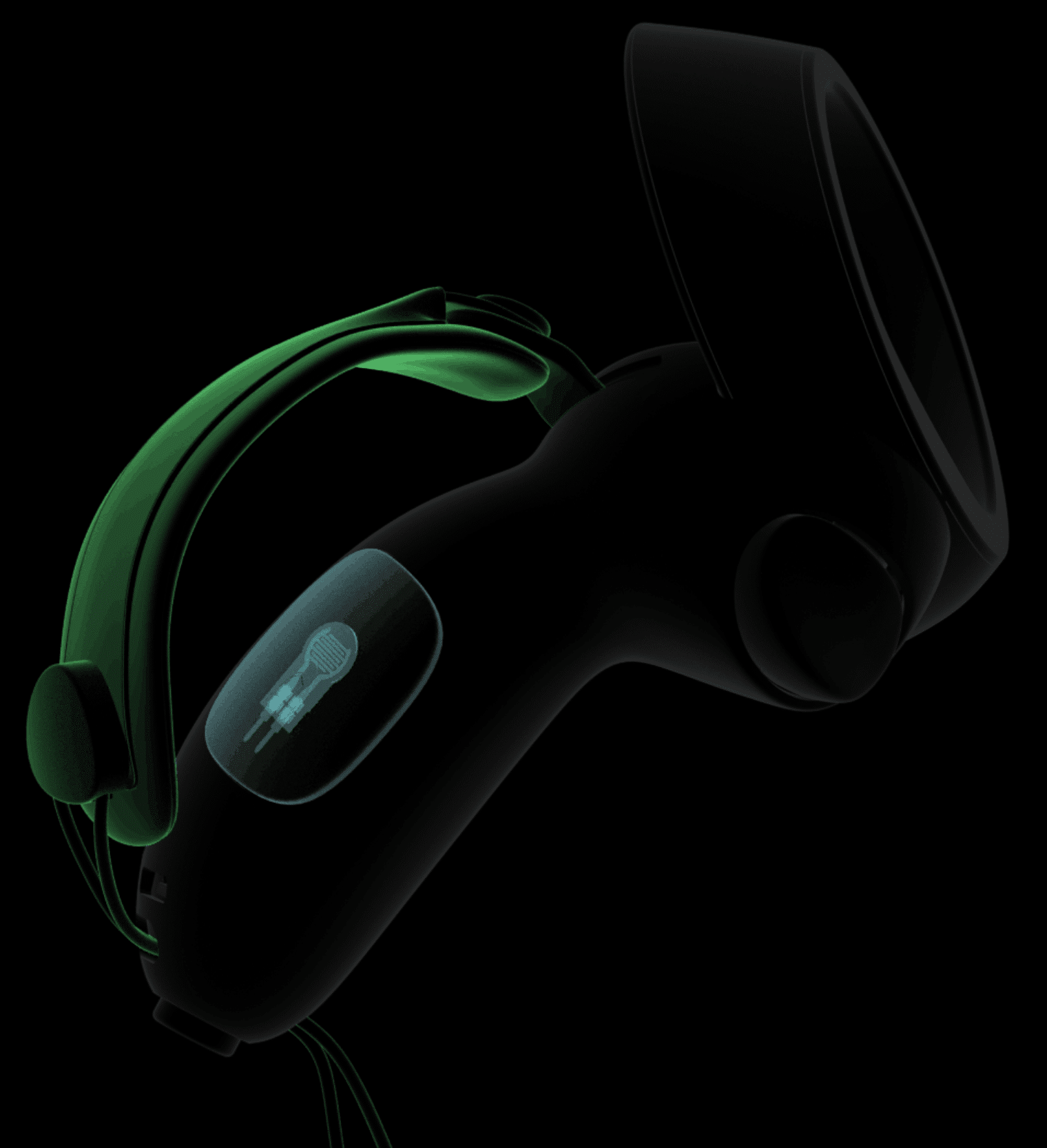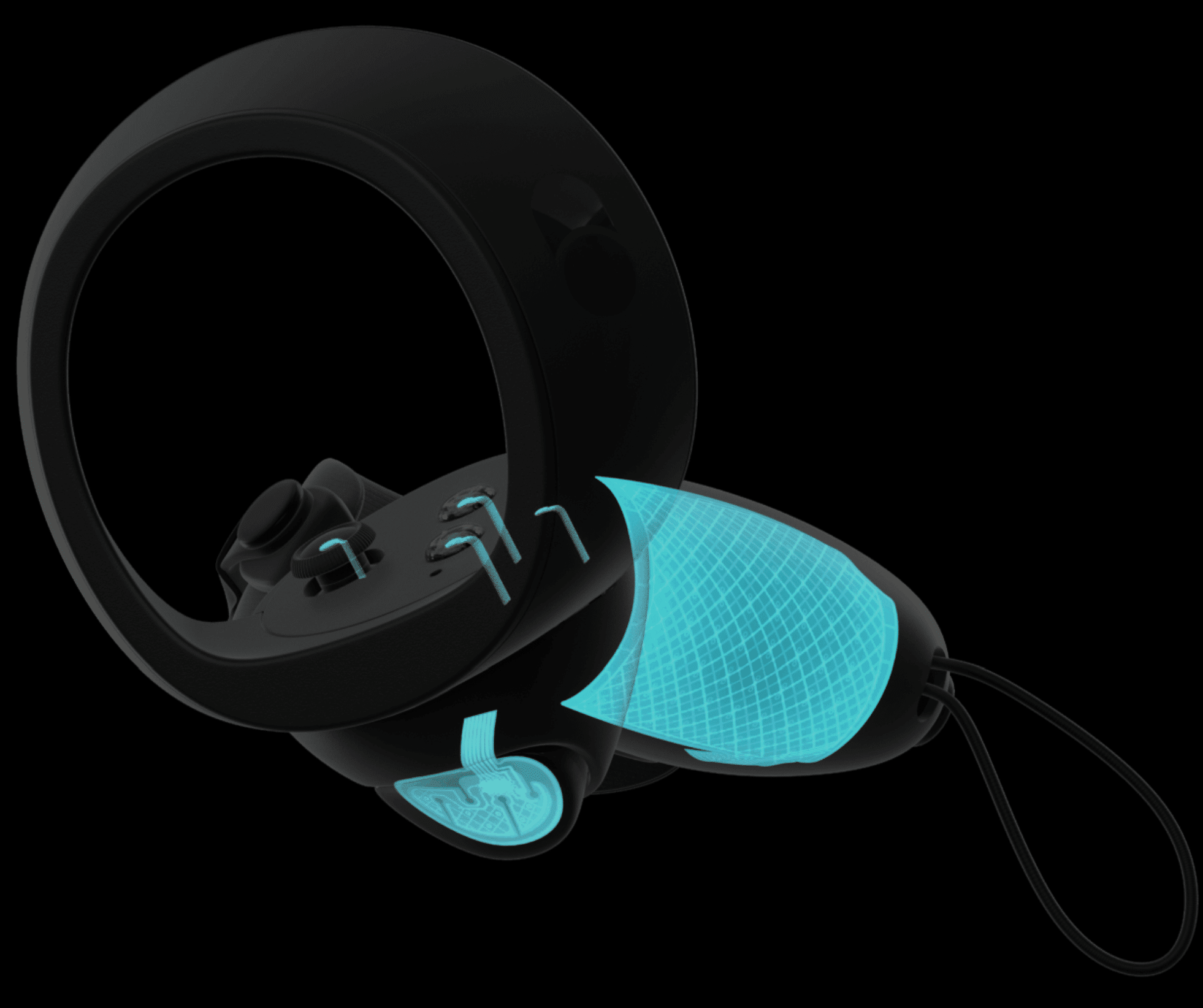Three weeks ago, seemingly without anyone noticing, self-described serial entrepreneur Or Kuntzman announced a $450 SteamVR headset called “DecaGear 1” claimed as having HP Reverb resolution, facial expression tracking, hip tracking, and Touch-like controllers with Index-like finger tracking.
Wait, what? If you found yourself wondering whether or not this is even real, so did we. In the product’s announcement, Kuntzman thanked Valve for help:
“We’ve had frequent help from the Valve team with SteamVR integration and some aspects of the system’s development (thanks Valve).”
This drew our attention, so we reached out to Valve to check this claim and got the following response:
“While we did not work with DECA on the design, we did – as we always always aim to – provide technical support on SteamVR integration, etc. We’re excited to try this headset when it becomes available,” a Valve spokesperson wrote in an email.
My first tweet.
— Or Kuntzman (@KuntzmanOr) October 17, 2020
Turns out it's really hard to build a VR headset and right now my life kinda centers around VR, games, engineering, machine vision SO I decided to sit down and tweet about it.
That of course doesn’t mean the company, Megadodo Simulation Games, can ship this product at $450 successfully. It just means we verified this one claim about working with Valve on SteamVR integration.
Who Is Or Kuntzman?
According to his LinkedIn page, Kuntzman and his company is currently located in Thailand. He was educated at Tel Aviv University in Israel and now he wants to expedite the growth of VR.
I am a Co-Founder and CEO of Megadodo Simulation Games, where we focus on multiplayer virtual reality through nonstop innovations in computer vision, haptics, facial tracking, finger tracking and social interaction in order to enable a new level of presence and expedite the move from traditional gaming to VR.
Between 2004 and 2009, the page says he co-founded an advertising tech startup called Targetpoint, which was then sold to “Cydoor Desktop Media”, which Adware Report classifies as spyware and Symantec AntiVirus lists as adware. He co-founded Install Labs Ltd, according to the page, with his involvement listed as extending from 2011 to 2013. According to a 2018 Buzzfeed News investigation, Install Labs “distributed adware and other software classified as potentially unwanted programs (PUP) by security and anti-virus firms due to them causing frustration for users, and often installing other programs without permission“.
We contacted Kuntzman via direct message on LinkedIn and asked about Targetpoint and Install Labs. Kuntzman wrote back:
“Target point was an text advertising search company, we offered search mechanism with integrated monetisation to websites, until Google came and offer the same. But we manage to sell the company before it happen. install labs was an adware install technology which maybe sounds like a shady business now, but back then it was mainstream. Yahoo and Google fight on global search share and they basically funded all the adware industry by paying for their toolbar installations 80% of our revenues came from Google, the rest was yahoo , Babylon , etc.”
Kuntzman is listed in the Panama Papers leaks as connected to another adware company, CoolMirage Ltd, but the database for these leaks warns that there are “legitimate uses for offshore companies and trusts”. He told us he was the only source of funding for Megadodo until a year ago, when “another investor joined”, and now they have 19 people working full-time with 17 engineers.
The DecaGear Headset
Kuntzman wrote that they are planning to release an infographic to show the DecaGear headset’s major components, with plans for an answer site to go live this week “with more specific details that repeatedly” are asked about in their Discord group.
“There is some skepticism in the air, which is totally understandable,” the Megadodo founder wrote.
Around 7,000 people signed up for the DecaGear waitlist for more information, according to Kuntzman, with the site also offering “for only $10, pre order today.” The site lists the DecaGear’s “1st batch shipping in May 2021” and the headset is said to feature dual 2160×2160 panels at 90 Hz. The PPI is listed as 1058, so given the other specifications it’s likely the same panel used by HP.
Tracking is handled by 4 cameras on the front corners, similar placement to Facebook’s Oculus Quest line. Megadodo claims sub-mm precision and sub-mm jitter in “most environments”.

Developing a high quality inside-out tracking system that works consistently in a variety of home environments is a considerable challenge. HTC’s Vive Cosmos received heavy criticism for tracking problems at launch, and Facebook’s Oculus Rift S needed post-launch tracking patches to work properly in competitive titles.
But Megadodo doesn’t seem to lack computer vision talent. DecaGear’s unique feature is ‘FaceFlow’. Two cameras, one in the nose gap the other above the lenses, apparently work together to track face movements.
Kuntzman’ announcement expresses his desire for VR to “project a greater range of human sensations into the digital space”. The demo video shows FaceFlow is more than just a concept, but it looks rough around the edges. About half the company is working on the SLAM and controller tracking, according to the founder, and “Tracking is done onboard , we have 3 different hardware variations there that include chipsets from ARM, Qualcomm and NXP.” The next couple months are about optimizing the experience, he wrote.
The Controllers & Hip Tracker
The $449 package comes with dual controllers and a hip tracker.

The controller face resembles Oculus Touch with a thumbstick, two action buttons, and menu button. There’s also a Touch-like tracking ring, presumably housing LEDs for the headset’s cameras to track.
But the handle takes inspiration from Valve’s Index controllers. You wear them with the strap and the handle can sense how hard you’re squeezing it. That means you should be able to naturally throw by letting go, and possibly crush cans in Half-Life: Alyx.

And like the Index controllers, these have 5-finger capacitive sensing, so you can be expressive with your hands in social VR.

Also included in the package is a hip-tracker called DecaMove. Current VR systems don’t know which way you’re facing, so you move in the direction of your head or your controllers (it’s usually configurable).
DecaMove is supposed to let you move in the direction your body is facing, so you can separately aim your controllers, and look around, without affecting your direction of movement.
PC VR’s Savior?
As if a high resolution inside-out tracked headset with face tracking wasn’t enough, Megadodo is teasing a $49 wireless addon, DecaAir. We don’t know how this would actually work, though, and we didn’t get a chance to ask Kuntzman about it during our brief chat on LinkedIn.
Last week, Kuntzman tweeted a link to Valve’s Steam Hardware Survey, which shows just 2% of PC gamers currently use a PC VR headset.
Less than 2% of steam users have a VR headset. We have tons of room to growhttps://t.co/B2VwBzgLLV#VR #steamvr #VirtualReality
— Or Kuntzman (@KuntzmanOr) October 20, 2020
Oculus Quest developers tell us they’ve seen a surge in content sales throughout 2020, and Quest 2’s launch was even bigger. So why isn’t SteamVR seeing the same kind of growth? The most used headsets, as reported by that same Hardware Survey, are 2019’s Oculus Rift S and 2016’s HTC Vive. The Rift S was partially designed by Lenovo and seemed more focused on cost cutting than moving the medium forward. HTC’s Vive successor failed to gain traction with consumers. Valve delivered a number of innovations with the Index, but at $999 the full kit is out of reach for most. Lots of people have pre-ordered an HP Reverb G2, but its still a bit pricier than the soon-to-be-retired Rift S. Is the PC VR market waiting on affordable innovation? Maybe. That’s at least what Megadodo seems to be aiming for.
Only time will tell if Megadodo can actually meet its lofty goals. Even if the company actually builds a handful of these headsets, that’s still a long way away from affordably mass producing them. We’ll provide updates as soon as we learn more about this effort.
Managing editor Ian Hamilton contributed to this report.



























